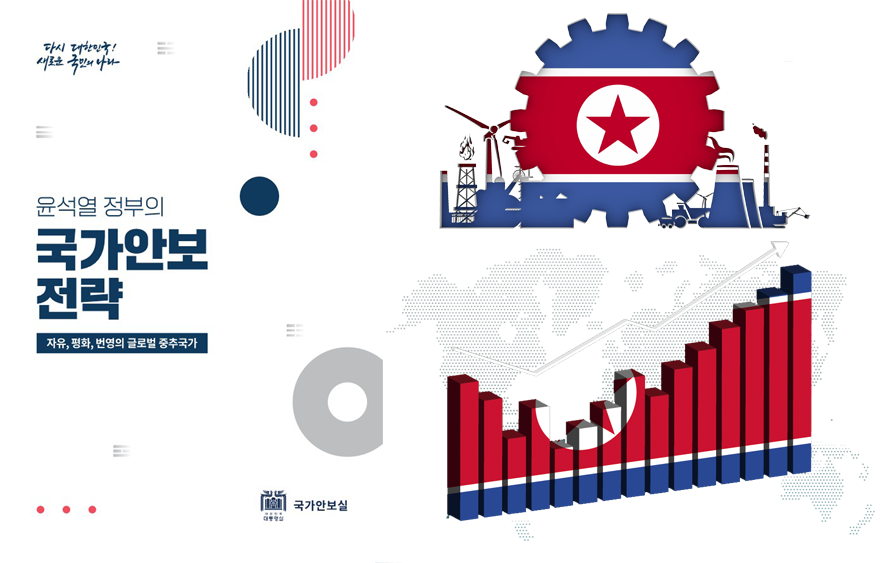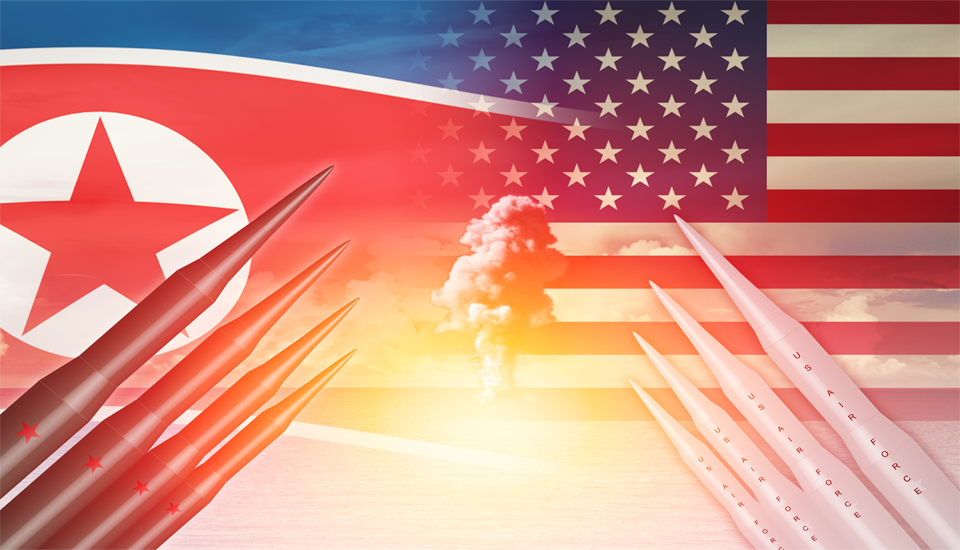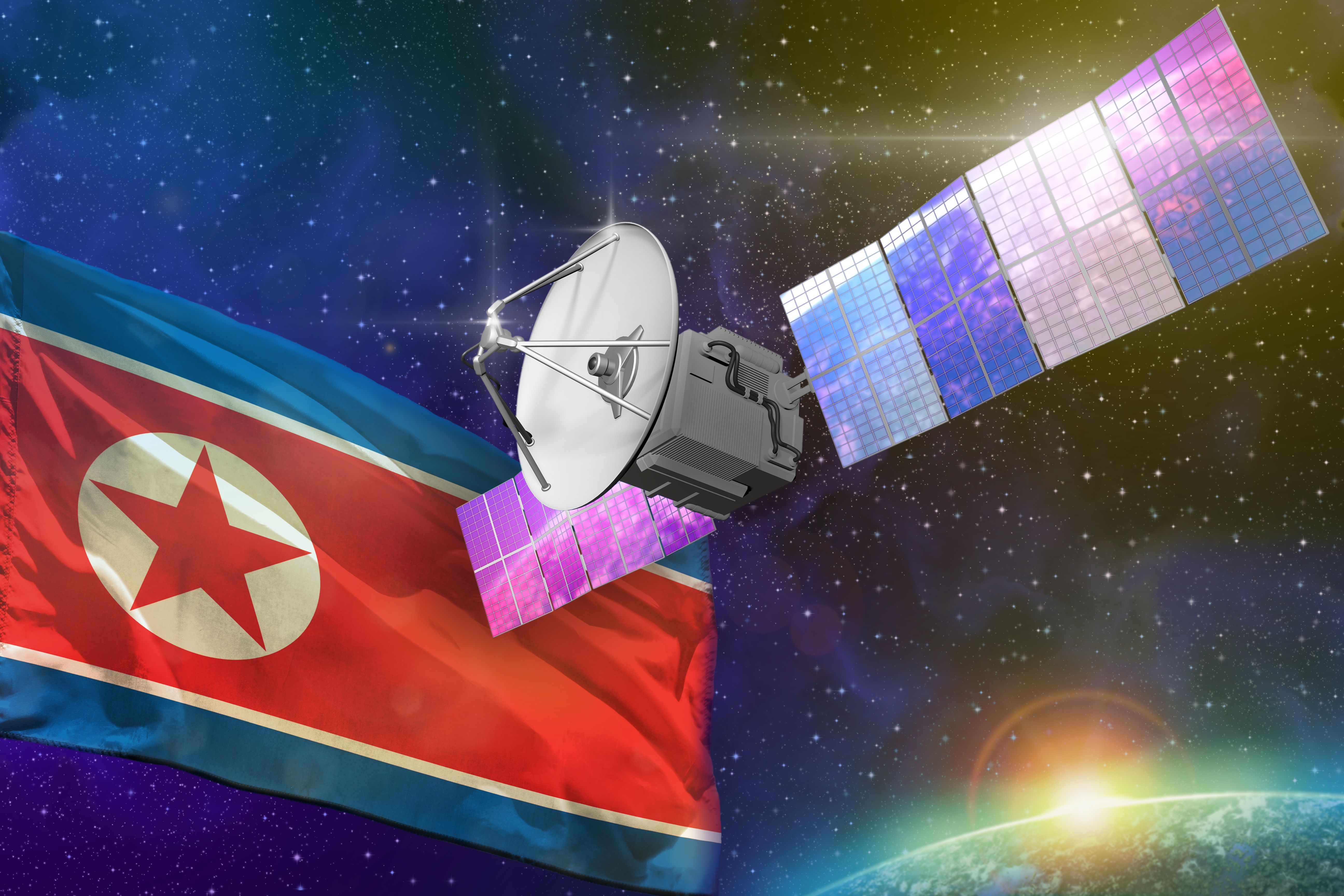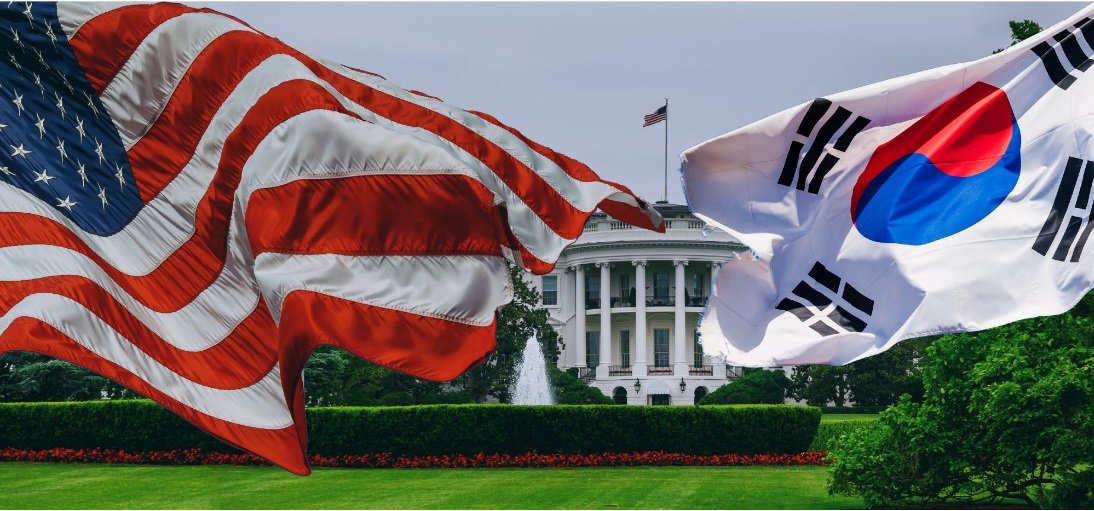
One Thing It Lacks: South Korea’s North Korea Policy in 2023 National Security Strategy
Commentary | June 30, 2023
Yang Gyu Kim
Principal Researcher, East Asia Institute
Yang Gyu Kim, Principal Researcher at the East Asia Institute, conducts a critical analysis of the new National Security Strategy published on June 7, 2023 and offers policy recommendations for the ROK government’s DPRK policy outlined in the document. While Kim identifies with the National Security Office’s emphasis on strengthening deterrence measures against growing DPRK nuclear and missile threats, he highlights that South Korean countermeasures create a feedback loop that affects North Korea’s threat perception. The author, therefore, points out the limits of the current 3D (Deterrence, Dissuasion, Dialogue) approach and recommends including a “Development” strategy to encourage Pyongyang to envision an alternative future path of prosperity and voluntarily take the denuclearization path.
On June 7th, 2023, the Office of National Security of the Republic of Korea published “The Yoon Suk Yeol Administration’s National Security Strategy: Global Pivotal State for Freedom, Peace and Prosperity.” The document presents the overarching principles, objectives, and directions of South Korea’s diplomatic and security policies. Following the publication of South Korea’s first-ever National Security Strategy document, “Peace, Prosperity, and National Security” under the Roh Moo Hyun administration in 2004, this marks the fifth National Security Strategy document for South Korea. It has not enjoyed significant public attention compared to Japan’s “National Security Strategy” released last December, which received an immediate positive reception by the Biden administration as well as statements of concerns from neighboring countries including China. Domestic assessments of the document have varied greatly, ranging from criticism such as “strategy prioritizing great power interests (Go and Jeong 2023)” to appraisal like “[a near-perfect strategy with] nothing more to add or subtract (Han 2023).” Considering that (1) domestic debates have revolved around South Korea’s policy orientation toward Japan and North Korea, and (2) the ROK-U.S.-Japan security cooperation has been strengthened to respond to "North Korea's nuclear and missile threats" (Office of National Security 2023, 44), the main cause of the contentious divide between the ruling and opposition parties lies in the DPRK policy encapsulated in the 2023 National Security Strategy document.
This study on the latest ROK National Security Strategy examines how the Yoon government understands the nature of North Korea’s threat and South Korea’s corresponding response by comparing the document with that of past South Korean administrations, the United States, and Japan. By interpreting the current domestic debates on North Korea policy in the context of “spiral” and “deterrence” models, this article explains the potential challenges that the North Korea policy direction suggested in the recent strategy document may face. To overcome the stalemate on the Korean Peninsula, South Korea must go beyond the mere distinction of whether North Korea is a “revisionist” or a “status quo power” and advocate for strategic policymaking that could guide North Korea to alter its strategic orientation. This article recommends a 4D policy in place of the current “3D (Deterrence, Dissuasion, Dialogue)” approach, adding the dimension of “alternative future development path (the fourth D) of prosperity for North Korea.”
The Core Tenets of the 2023 National Security Strategy
The etymology of the word “strategy” can be traced back to the Greek term strategia, which originally referred to the “art of a general” in military command (Harper, n.d.). Considering Clausewitz’s theories on the “purpose” and “means” of warfare (Clausewitz 1989), the essence of strategy can be organized around the goals to be achieved and the means employed to achieve them. South Korea’s first National Security Strategy document defines the concept of national security strategy as a “comprehensive plan that mobilizes the nation’s available resources to achieve national security objectives within the domestic and international security environment [emphasis added by the author]” (National Security Council 2004). Other countries also organize their National Security Strategy documents in an organized manner, describing the means to safeguard vital national interests in the face of challenges and outlining the corresponding response processes.
The United States’ National Security Strategy (NSS), released in October 2022, describes the challenges facing the United States as the need to uphold the “rules-based" international structure based on human rights, freedom, and the rule of law amid the clash between democracy and authoritarianism. Also critical is the response to transnational threats such as climate change, food insecurity, health issues, terrorism, and energy crises. The strategy outlines three response measures: “1) invest in underlying sources and tools of American power and influence; (2) build the strongest possible coalition of nations to enhance collective influence […] , and (3) modernize and strengthen our military so it is equipped for the era of strategic competition.” “Out-Competing China” and “containing Russia” are prioritized, and the NSS also underscores the need to enhance deterrence toward Iran and North Korea (The White House 2022).
Japan’s National Security Strategy, announced in December 2022, identifies maintaining Japan’s sovereignty, independence, territorial integrity, and national security; creating an international environment conducive to Japan’s prosperity and its assurance; and protecting universal values and developing a free and open international order as Japan’s three core national interests. To achieve these objectives, the Strategy presents: (1) strengthening and reforming Japan’s defense capabilities, (2) international cooperation and leadership to uphold universal values, (3) defense-oriented principles and non-nuclear principles, (4) enhancing the Japan-U.S. alliance, and (5) coexistence and cooperation through multilateral engagement with like-minded countries. Japan prioritizes threats in the following order: China’s strategic opacity and military buildup, North Korea’s missiles and nuclear weapons, and Russia’s military actions toward neighboring countries and its strategic coordination with China (Prime Minister’s Office 2022).
Existing National Security Strategy documents of previous South Korean governments share a similar structure. While there may be differences in expression and priority, those released by Roh Moo Hyun, Lee Myung Bak, and Park Geun Hye governments define the core national interests as securing safety of citizens and territorial sovereignty, promoting peace and prosperity on the Korean Peninsula, and fostering mutual prosperity in Northeast Asia. The means to achieve these objectives include strong ROK-U.S. alliance, international cooperation, and advanced security mechanisms, among others (Jeon 2017). Moon Jae-in government aims to resolve the North Korean nuclear issue, promote peace and prosperity in Northeast Asia and the world, and safety of citizens. To achieve these goals, it seeks to strengthen independent defense capabilities based on the South Korea-U.S. alliance, adopt a pragmatic diplomacy centered on the people and national interests, and enhance the national crisis management capability for a safe Republic of Korea (Office of National Security 2018).
Likewise, Yoon Suk Yeol government’s National Security Strategy also sets forth “defend[ing] national sovereignty and territory, and enhancing the safety of citizens,” “establish[ing] peace on the Korean Peninsula and preparing for future unification,” and “lay[ing] the foundation for East Asia’s prosperity and expanding the nation’s global roles” as core national security objectives (Office of National Security 2023). Apart from the expansion of diplomatic space from Northeast Asia to the global stage, there are no significant differences in defining national interests compared to previous strategy documents. While it does not explicitly emphasize concepts such as proactive national defense or transfer of operational control (OPCON), the strategy aligns with the existing National Security Strategy by highlighting increasing defense innovation, building a strong military based on advanced technologies, and enhancing the South Korea-U.S. alliance to a more comprehensive global partnership. The document also identifies the following elements as threats to national interests: growing DPRK threat to security, intensifying competition between the United States and China, deepening “protectionist tendencies and escalating economic security risks,” and emerging threats such as infectious diseases, climate change, and cyber attacks. While there may be differences in priority, the document bears significant resemblance to the United States’ perception of threats (Office of National Security 2023).
Some voices have openly opposed this National Security Strategy, pointing out that it closes the door to dialogue and diplomacy with North Korea, adopts a “submissive” attitude towards Japan in relation to historical and territorial issues, and relies excessively on the ROK-U.S.-Japan trilateral security (Go and Jeong 2023). However, this strategy, like the previous governments’ “omnidirectional diplomacy” and “pragmatic diplomacy,” adopts pragmatism as a key approach. Consequently, it does not propose a strategy that is limited to fragmented and uniform means, refuting the notion that it is one-sided and uniform.
However, the reason for such concerns is that the Yoon Suk Yeol government’s policy paper presents a distinct approach of emphasizing “values diplomacy” and “principles and reciprocity.” By promoting the principle of “enhancing solidarity in the international community based on the values of freedom and democracy,” issues of “human rights” and “international norms” are highlighted. With the United States and Japan, which share the same values, cooperation can be enhanced both in security and economic, supply chain, and socio-cultural aspects. However, for countries like China and Russia that do not share the same values, the strategy emphasizes a “safeguarding national interests with confident diplomacy anchored in principles” and “stable bilateral relationship guided by international rules” (Office of National Security 2023, 47; 52). Regarding North Korea, there is an emphasis on taking a “principled” policies and upholding “the national standing and core values of the Republic of Korea, while also maintaining a pragmatic and flexible approach.” (Office of National Security 2023, 101).
The Spiral Model and Deterrence Model: Two Models for Approaching the North Korean Issue and the 2023 National Security Strategy
The 2023 National Security Strategy, which emphasizes values, presents a distinct policy direction towards North Korea. Since the release of the first-ever National Security Strategy, the South Korean policy towards North Korea can be broadly categorized into two main streams. One is the emphasis on “Korean Peninsula of co-prosperity” highlighted during the Roh Moo Hyun and Moon Jae In administrations, while the other is the focus on “justice and peace” and the “trust-building process” advocated during the Lee Myung Bak and Park Geun Hye governments. The clash between these two stances, which can be viewed as conflicting perspectives between conservative and progressive camps, is often represented as the “Sunshine Policy” versus the “sanctions policy” (Ha and Cho 2010) This bears similarities to the opposition within the U.S. policy community towards the Soviet Union during the Cold War era. Robert Jervis explains this concept using the models of spiral and deterrence (Jervis 2017).
Deterrence model is based on the Game of Chicken. It suggests that mild and conciliatory gestures are interpreted as a lack of determination to safeguard one’s core interests, thereby prompting the opponent to exert stronger pressure. As a result, once concessions are made, one may find himself in a situation where more concessions are required. Therefore, to avoid a diplomatic disaster where more concessions are demanded, the key is demonstrating the ability and willingness to wage war. To win the chicken game, one must show an unwavering commitment and a strong position. According to the deterrence model, all issues are closely interconnected, so conceding on seemingly trivial matters can be interpreted by the opponent as a vulnerability. Therefore, the United States must respond firmly to all Soviet provocations occurring in every region of the world to prevent the Soviet Union’s opportunistic expansion attempts.
Spiral model highlights the issues that arise when both parties involved in a conflict apply the deterrence model simultaneously. As seen in the pre-World War I Anglo-German naval arms race, attempts to ensure one’s own security definitively undermine the security of the other party. This is similar to the Prisoner’s Dilemma, where the relentless pursuit of narrow self-interest ultimately undermines the interests of all parties involved. When the United States and the Soviet Union engaged in simultaneous deterrence, exchanging threats and punishments, it generated fear and suspicion, and led to a more severe security crisis, resulting in losses on every side. To overcome this security dilemma, one side must make the first concession, and the other party must reciprocate, thereby transforming the vicious cycle of threat exchange into a virtuous cycle of conciliatory measures exchange.
The choice between these two models depends on the scope conditions of the two theories. In other words, in the deterrence model, the other party is viewed as a revisionist power with an aggressive intent to change the status quo if given the opportunity, while in the spiral model, it is assumed that the other party seeks to maintain the status quo and has a defensive intent to secure its own security. Hans Morgenthau asserts that if we apply these models in reverse, implementing a policy based on the spiral model when the other party is a revisionist power, similar to Britain’s appeasement policy towards Hitler before World War II, significant diplomatic failures could occur. On the other hand, if we apply the deterrence model even when the other party seeks to maintain simply the status quo, as was the case with Britain’s containment policy towards pre-World War I Germany, it could ultimately result in a war (Morgenthau 2005).
Therefore, Jervis suggests that choosing which model to apply in formulating policies towards the Soviet Union should begin with accurately understanding the intentions of the Soviet Union. This requires a comprehensive examination of how the Soviet Union perceives the intentions of the United States. However, Morgenthau argues it is impossible to accurately ascertain the intentions of the other party, and intentions can easily change relative to capabilities. Thus, he advises that diplomatic policies should be based on capabilities rather than intentions. In applying these two perspectives to the case of North Korea, we understand two things. First, a strategy that closely monitors changes in North Korea’s capabilities is fundamentally necessary. Second, rather than pursuing either the sunshine policy or the sanction policy, it is important to respond flexibly by considering both North Korea’s strategic orientation and its perception of the intentions of South Korea and the United States.
Within this context, it is possible to anticipate the challenges the 2023 National Security Strategy will face in presenting a North Korea policy centered around values featuring principles and reciprocity. It is natural for South Korea, a mature democracy, to prioritize the values of freedom, rule of law, and human rights. However, when determining the direction of its diplomatic policy based on these values, South Korea faces the difficulty of simultaneously satisfying both “principles” and “pragmatic approaches and flexibility” in terms of (1) with whom it will form solidarity and (2) the means it will choose to shape its diplomatic policy toward that country.
For instance, while the current National Security Strategy emphasizes “flexibility” as the guiding principle of its North Korea policy, close examination of specific policy measures reveals that the central emphasis lies on strengthening deterrent capabilities such as the Kill Chain, Korea Air and Missile Defense (KAMD), and Korea Massive Punishment and Retaliation (KMPR); establishing a ROK Strategic Command to enhance deterrence via cutting-edge technology; and securing independent surveillance and reconnaissance capabilities by utilizing reconnaissance satellites, microsatellites, and medium altitude unmanned aerial vehicles.
Furthermore, while the three principles for denuclearization negotiations mentioned in the National Security Strategy are “deterrence, dissuasion, and dialogue,” there is insufficient discussion on the specific means to realize the third principle (dialogue). The content of the “Audacious Initiative” is contingent on North Korea “genuinely return[ing] to negotiations for denuclearization.” The basis for the normalization of inter-Korean relations also lies on “upholding a principle of zero tolerance against North Korea’s military provocations and ensuring that North Korea faces consequences for any wrongdoing. (Office of National Security 2023, 101-102).
The North Korean government has explicitly rejected the underlying principles of South Korea’s policy. In a statement released on August 19, 2022, Kim Yo Jong lambasted South Korea’s proposal, stating that “[President Yoon’s] ‘bold plan’ is the height of absurdity as it is an impracticable one to create mulberry fields in the dark blue ocean. (Shin 2022)”Additionally, Kim Jong Un, in his address to the 7th Session of the 14th Supreme People’s Assembly on September 8, 2022, asserted that the intentions of the United States and South Korea were to persuade North Korea to abandon its nuclear weapons and relinquish or weaken its self-defense capabilities in order to eventually collapse the North Korean regime. North Korea responded to the recently announced National Security Strategy not through official channels but through external propaganda outlets, describing it as an “extremely hostile confrontation scenario” that attempts to confront North Korea with the power of foreign forces. They criticized South Korea’s efforts to enhance its response capabilities as a “desperate attempt to accelerate preparations for an invasion by expending massive military expenditures to develop and purchase more weapons of war and murder” (Yoon 2023).
Policy Recommendation: Deliberations on the 4D Model of Deterrence-Dissuasion-Dialogue-Development
As Morgenthau pointed out, the fundamental strategy of foreign policy should always begin with consideration of adversary’s capabilities, and in a situation where North Korea’s intentions are unclear, it is safer to formulate national security strategies as cautiously as possible. Therefore, measures to strengthen South Korea’s deterrence capabilities in response to North Korea’s advancements in nuclear and missile capabilities are necessary, especially with North Korea’s adoption of the “Law on DPRK’s Policy on Nuclear Forces” on September 9, 2022. With this law that legalizes the use of nuclear weapons not only against non-nuclear states but also for the purpose of gaining control in the early stages of war, it would be risky not to prepare for such contingency. However, it is difficult to definitively conclude that North Korea’s enhancement of nuclear capabilities and adoption of an assertive nuclear strategy will determine its diplomatic orientation for the next 50 or 100 years. The reliance on nuclear weapons as a security strategy by states with conventional inferiority is a relatively common phenomenon, and is in fact a strategy that the United States employed during the Cold War to protect its European allies from Soviet threats.
One crucial aspect to consider is that South Korea’s policy towards the North Korean nuclear threat forms a feedback loop that influences North Korea’s threat perception and strategic orientation. As a result, South Korea’s North Korea policy goes beyond merely choosing between engagement or deterrence, Sunshine Policy or sanctions, and dialogue or dissuasion. Instead, it extends to the issue of determining what kind of stimuli and information South Korea will inculcate in the course of North Korea’s establishment of own national strategies.
In this context, strengthening U.S.-South Korea integrated deterrence and building on international cooperation to enhance the effectiveness of sanctions is essential in order to prove to the North Korean regime that an obsession with nuclear weapons is not a viable solution for the survival of the regime. Simultaneously, it is also important to pursue measures that enable Pyongyang to understand that regime stability and prosperity can be guaranteed upon denuclearization. Therefore, attention should be given to alternative models suggested by the previous studies such as the qualdruple complex approach incorporating “sanctions, deterrence, engagement” and “reform” (Ha and Sohn 2021), or the 4D model of “Deterrence, Dissuasion, Dialogue, and Development” in the form of “Audacious Initiative 2.0” (Chun et al. 2023).
Specifically, the “Development” portion within the 4D model should include a lucid vision of the “alternative future and developmental path of North Korea.” Rather than a conditional approach that engages in negotiations about the future of the Korean Peninsula only after North Korea changes its strategic orientation by first abandoning nuclear weapons, there is a need for South Korea to send a signal to the North that it is seriously contemplating the future survival strategies of North Korea as well as inter-Korean co-prosperity. To achieve this, it is necessary to engage in dialogue and cooperation with not only like-minded, but also non-like-minded countries. For instance, potential regime security measures acceptable to the North Korean regime can be discussed with China, which succeeded in economic reform while maintaining similar political establishment. These measures can then be materialized through a ROK-Japan-China strategic dialogue and mediation of U.S.-North Korea dialogue.
Furthermore, it is vital to include North Korea in negotiations over the global supply chain, which is being reshaped under the “de-risking” principle between the United States and China (The White House 2023), and discuss pathways to ensure sustained economic growth for North Korea through Track 2 or Track 1.5 dialogues. Ultimately, in order to encourage North Korea to voluntarily seek the path of denuclearization, South Korea must demonstrate its sincere pursuit of coexistence and prosperity on the Korean Peninsula, rather than the collapse of the North Korean regime. In this context, while there may be nothing to subtract in this National Security Strategy, there is certainly an element to add.
References
Clausewitz, Carl von. 1989. On War. Princeton, New Jersey: Princeton University Press.
Go, Sang-min and Soo-yeon Jeong. 2023. “Park Kwang-on “The Yoon government’s National Security Strategy is ‘a strategy that prioritizes great power interests’”.” Yonhap News, June 8. https://www.yna.co.kr/view/AKR20230608053200001
Ha, Young-sun, Jae-sung Jeon, Dong-ryul Lee, Byung-yeon Kim, Yeol Sohn, Jae-jeok Park, Heon-jun Kim, Seung-joo Lee, and Tae-kyun Kim. 2021. 2022 New Government Foreign Policy Proposal: New Government’s Reconstruction of Symbiotic Diplomacy. Seoul: East Asia Institute.
Ha, Young-sun and Dong-ho Cho. 2010. North Korea 2032: A Resonance Strategy towards Advancement. Seoul: East Asia Institute.
Han, Ye-seul. 2023. “Na Kyung-won “emotional over deletion of Moon’s end-of-war declaration… the Yoon administration’s security strategy has been completed”.” Joongang Ilbo, June 8. https://www.joongang.co.kr/article/25168410#home.
Harper, Douglas. “strategy.” Etymology. https://www.etymonline.com/search?q=harper
Jervis, Robert. 2017. Perception and Misperception in International Politics: New Edition. Princeton, New Jersey: Princeton University Press.
Jeon, Bong-geun. 2017. “The Concept and Structure of National Interest in National Security Strategies.” IFANS Major International Issue Analysis 2017, 15.
Jeon, Jae-sung, Won-gon Park, Jae-jeok Park, Yeol Sohn, Dong-ryul Lee, Seung-joo Lee, and Young-sun Ha. 2023. “Yoon Suk Yeol Administration’s First Year Assessment and Policy Tasks①: Foreign Policy and Security.” EAI Special Report Series, 1.
Morgenthau, Hans Joachim, Kenneth W. Thompson, and W. David Clinton. 2005. Politics Among Nations. 7th ed. New York: McGraw-Hill Education.
National Security Council. 2004. The Security Policy Conceptions of the Participatory Government: Peace, Prosperity, and National Security. Seoul: Office of the National Security Council.
Office of National Security. 2018. The National Security Strategy of the Moon Jae In Administration. Seoul: Office of National Security.
Office of National Security. 2023. The Yoon Suk Yeol Administration’s National Security Strategy: Global Pivotal State for Freedom, Peace, and Prosperity. Seoul: Office of National Security.
Prime Minister’s Office. 2022. “National Security Strategy(NSS).” https://www.cas.go.jp/jp/siryou/221216anzenhoshou/nss-e.pd
Shin, Mitch. 2022. “North Korea Trashes Yoon’s ‘Audacious Initiative’ for Denuclearization.” The Diplomat. August 19.
The White House. 2023. “Remarks by National Security Advisor Jake Sullivan on Renewing American Economic Leadership at the Brookings Institution.” April 27. https://www.whitehouse.gov/briefing-room/speeches-remarks/2023/04/27/remarks-by-national-security-advisor-jake-sullivan-on-renewing-american-economic-leadership-at-the-brookings-institution/
Yoon, Hyung-sun. 2023. “North Korea resists that the Yoon Administration’s ‘Security Strategy’ is a war plan document.” Snk Press, June 18. https://www.snkpress.kr/news/articleView.html?idxno=1135
■ Yang Gyu Kim is the Executive Director (Principal Researcher) at the East Asia Institute and a Lecturer in the Department of Political Science and International Relations at Seoul National University. .
■ Typeset by Jisoo Park, Research Associate
For inquiries: 02 2277 1683 (ext. 208) | jspark@eai.or.kr
Inter-Korean Relations and Unification

Tasks for North Korea Policy After the Washington Declaration
Yu-hwan Koh | 05.June.2023

North Korea’s Space Development: The Gap Between Ideal and Reality
Cheol-wun Jang | 22.May.2023

The South Korea-U.S. Summit and Measures to Enhance Bilateral Cooperation on North Korea
Jechun Kim | 03.May.2023
LIST